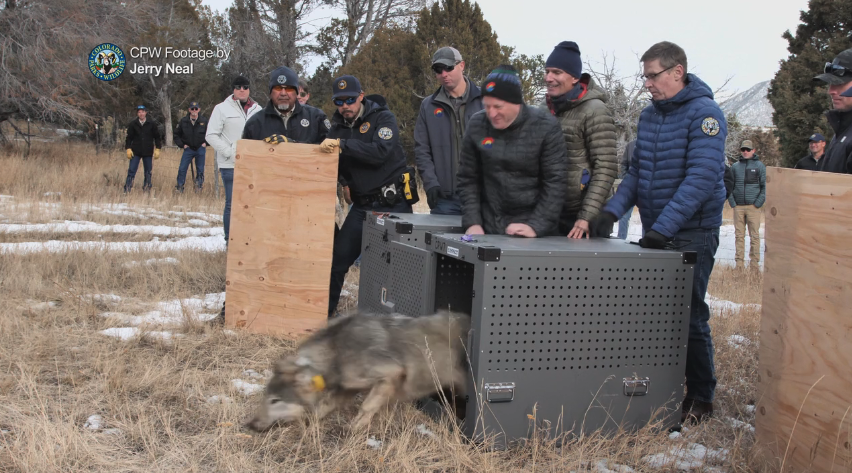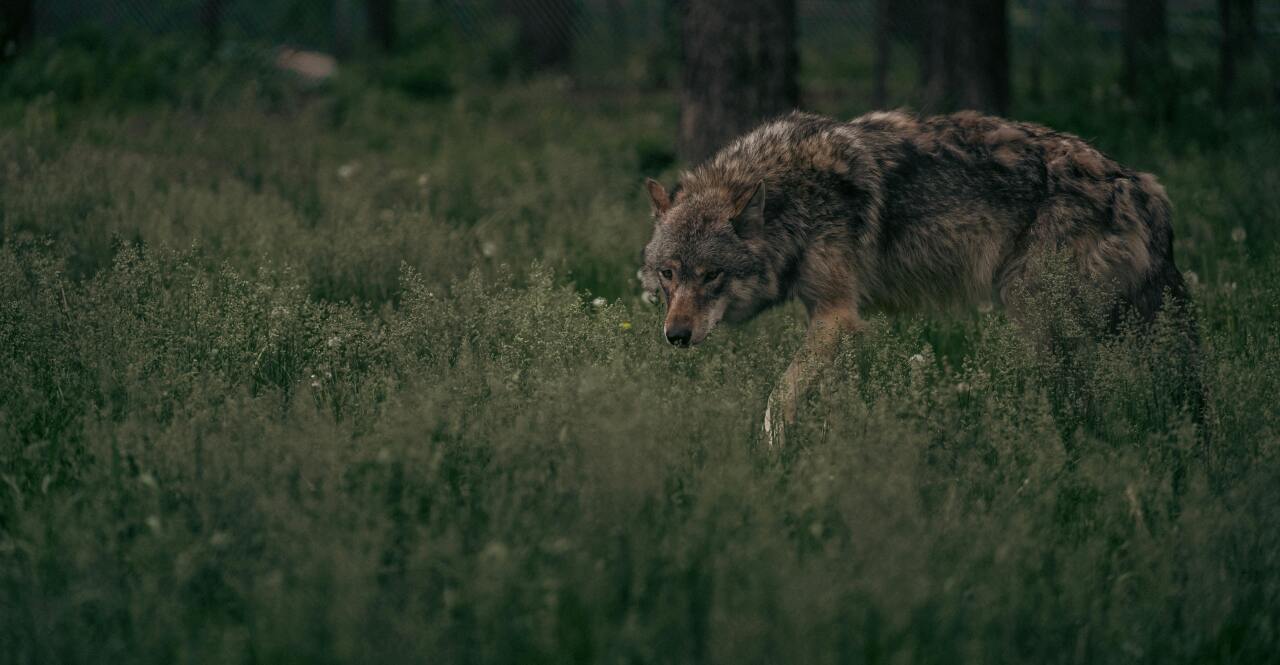DENVER — The U.S. Fish and Wildlife Service (USFWS) has identified how two of Colorado's reintroduced gray wolves died earlier this year.
The department determined that a female wolf that was found deceased in Rocky Mountain National Park on April 20 had died of injuries from an apparent mountain lion attack, according to the Wednesday afternoon release from Colorado Parks and Wildlife (CPW).
Another female wolf, this time in northwest Colorado, died on May 15 of an "apparent secondary trauma from a lawful foothold trap used for coyote control," CPW reported. Because the trap was placed lawfully, no law enforcement action is required, CPW said.
CPW explained that while Colorado law generally prohibits the use of foothold traps, individuals who own property for commercial livestock production — or their designated agents — can use the traps for a 30-day period if specific criteria are met. In this case, the criteria was satisfied and the permit was valid. When the person realized they had trapped a wolf, they notified CPW, which released the animal back into the wild. It died the following day, CPW said.
In the wake of this, CPW said it has implemented a statewide suspension on issuing those 30-day permits for not just foothold traps, but also "instant-kill body-gripping design traps, or snares."
CPW said additional guidance is coming soon.
The USFWS investigates all gray wolf deaths because the animals are a federally listed species under the Endangered Species Act. The USFWS is responsible for determining the cause of death.
That department is still investigating the death of a male wolf on May 31 in northwest Colorado.
Six gray wolves, five of which were translocated from British Columbia in January, have died since they arrived in Colorado. However, CPW confirmed that the wolf survival rate in the state is "within normal margins," as the average lifespan of a gray wolf in the Rocky Mountains is typically three to four years.
The below list outlines an overview of the known wolf population in Colorado:
- Seven wolves surviving from the original 10 that were released in December 2023 (one died of a likely mountain lion attack, a second died from injuries sustained prior to his capture as part of the Copper Creek Pack relocation effort, and a third wolf became sickly and died)
- Four of the five wolf pups born in the spring of 2024 (one male was killed after multiple depredations in Pitkin County)
- 10 wolves surviving from the 15 that were released in January 2025 (one was shot and killed by Wildlife Services in Wyoming earlier this month, a second died of unknown causes in Wyoming, a third died in Rocky Mountain National Park, a fourth died in northwest Colorado and the fifth also died in northwest Colorado)
- Unknown number of pups born in four packs in 2025
- Two wolves that moved south from Wyoming several years ago
- One uncollared wolf that was last known to be in northwest Moffat County in mid-February. It is not clear if it is alive or still in the state.
- Possible, but unconfirmed, wolf in the Browns Park area as of February. It is not clear if it is alive or still in the state.
Denver7 has been following Colorado's wolf reintroduction program since the very beginning, and you can explore all of that reporting in the timeline below. The timeline starts with our most recent story.







